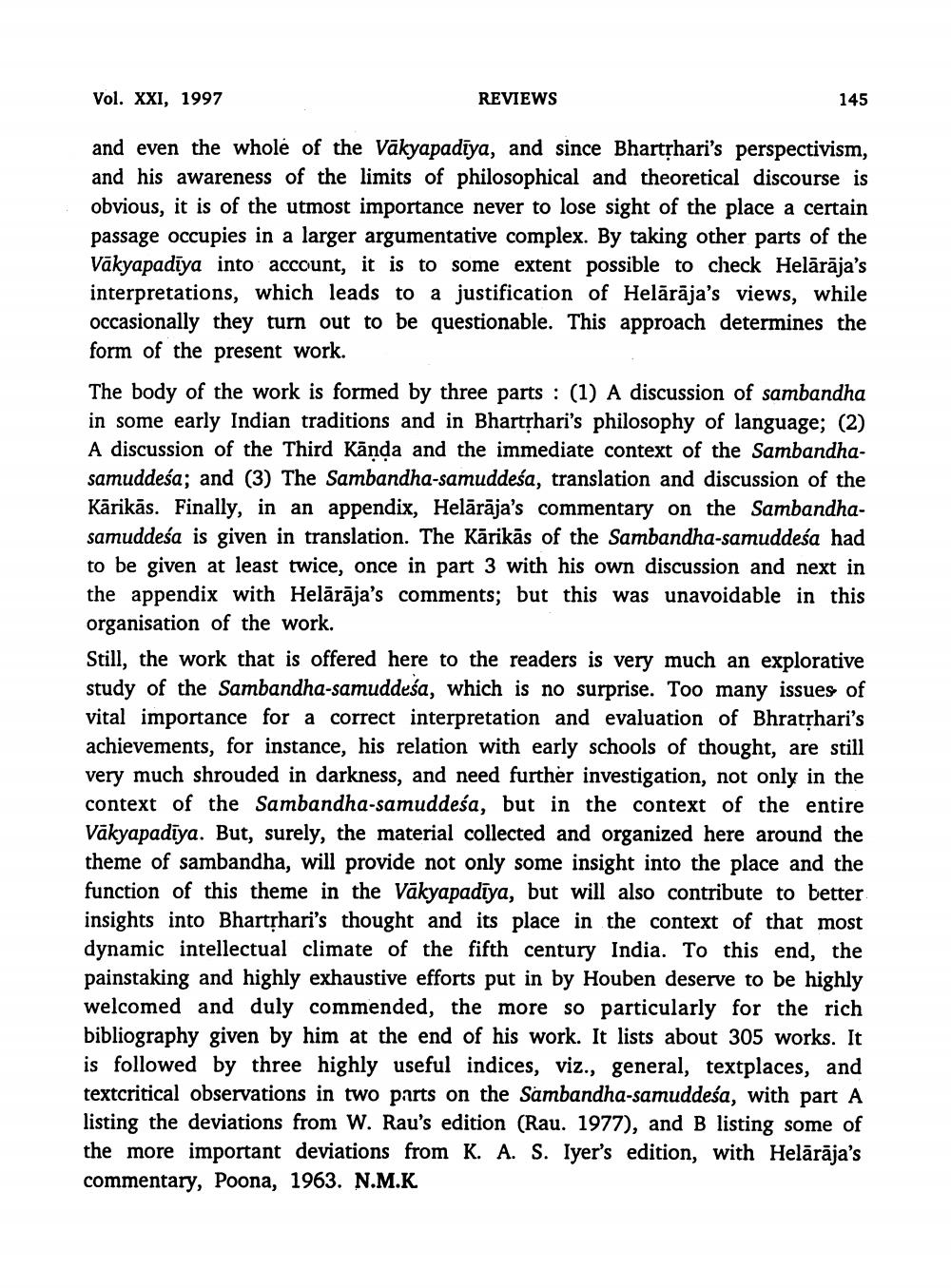________________
Vol. XXI, 1997
REVIEWS
145
and even the whole of the Vakyapadīya, and since Bhartshari's perspectivism, and his awareness of the limits of philosophical and theoretical discourse is obvious, it is of the utmost importance never to lose sight of the place a certain passage occupies in a larger argumentative complex. By taking other parts of the Vākyapadīya into account, it is to some extent possible to check Helārāja's interpretations, which leads to a justification of Helārāja's views, while occasionally they turn out to be questionable. This approach determines the form of the present work.
The body of the work is formed by three parts : (1) A discussion of sambandha in some early Indian traditions and in Bhartěhari's philosophy of language; (2) A discussion of the Third Kända and the immediate context of the Sambandhasamuddeśa; and (3) The Sambandha-samuddeśa, translation and discussion of the Kārikās. Finally, in an appendix, Helārāja's commentary on the Sambandhasamuddeśa is given in translation. The Kärikās of the Sambandha-samuddeśa had to be given at least twice, once in part 3 with his own discussion and next in the appendix with Helārāja's comments; but this was unavoidable in this organisation of the work. Still, the work that is offered here to the readers is very much an explorative study of the Sambandha-samuddeśa, which is no surprise. Too many issues of vital importance for a correct interpretation and evaluation of Bhrathari's achievements, for instance, his relation with early schools of thought, are still very much shrouded in darkness, and need further investigation, not only in the context of the Sambandha-samuddeśa, but in the context of the entire Vākyapadīya. But, surely, the material collected and organized here around the theme of sambandha, will provide not only some insight into the place and the function of this theme in the Vākyapadīya, but will also contribute to better insights into Bharthari's thought and its place in the context of that most dynamic intellectual climate of the fifth century India. To this end, the painstaking and highly exhaustive efforts put in by Houben deserve to be highly welcomed and duly commended, the more so particularly for the rich bibliography given by him at the end of his work. It lists about 305 works. It is followed by three highly useful indices, viz., general, textplaces, and textcritical observations in two parts on the Sambandha-samuddeśa, with part A listing the deviations from W. Rau's edition (Rau. 1977), and B listing some of the more important deviations from K. A. S. Iyer's edition, with Helārāja's commentary, Poona, 1963. N.M.K




